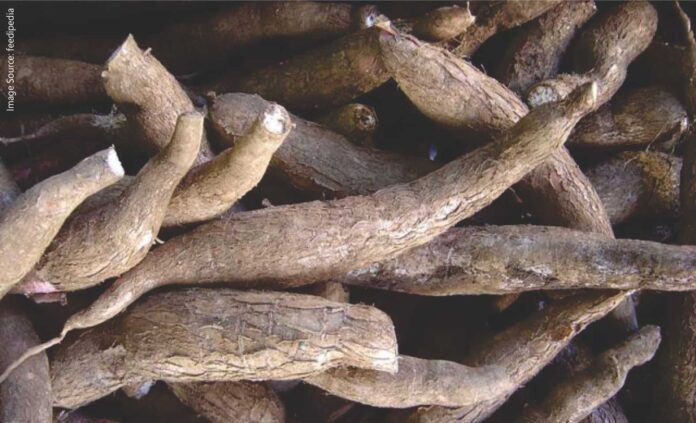The ICAR-Central Tuber Crops Research Institute (CTCRI) here has issued an advisory on feeding animals with parts of cassava (tapioca) in view of the incident in Idukki where 13 cows died in a farm recently.
All parts of cassava/tapioca – leaves, stem, tuber and rind – contain the compounds called cyanogenic glucosides (CNGs), that is, linamarin and lotaustralin (in the ratio 93:7), which are hydrolysed by endogenous enzyme linamarase to acetone cyanohydrin which may break down spontaneously liberating free hydrogen cyanide. Both acetone cyanohydrin and free cyanide are toxic,” according to the advisory.
Cassava leaves contain about 10 times higher amount of CNGs than roots. The CNG content of cassava leaves decreases with the increase in the age of the leaves. The rind contains 10-30 times higher cyanoglucoside content than the edible parts. Feeding crushed peels or leaves immediately after crushing or without proper drying poses a high risk of cyanide poisoning in animals, according to the advisory.
Tuber/roots of non-bitter cultivars can be fed to the animals after peeling in the raw form. Nevertheless, cooking in water by slowly raising the temperature (tuber pieces should not be put into boiled water) is also advisable.
Boiling in water (by slowly raising the temperature) or slow sun drying for 12-18 hours can remove up to 80-90% of the cyanoglucosides present in the leaves.
Since peels contain high amounts of CNGs, it needs to be processed separately to bring down the toxic compounds to safer levels. Crushing the peels and allowing it to remain at room temperature by spreading on a mat for about 5-6 h and then completely drying the crushed peels in sunlight is the best way to remove cyanide.
Source: The Hindu













